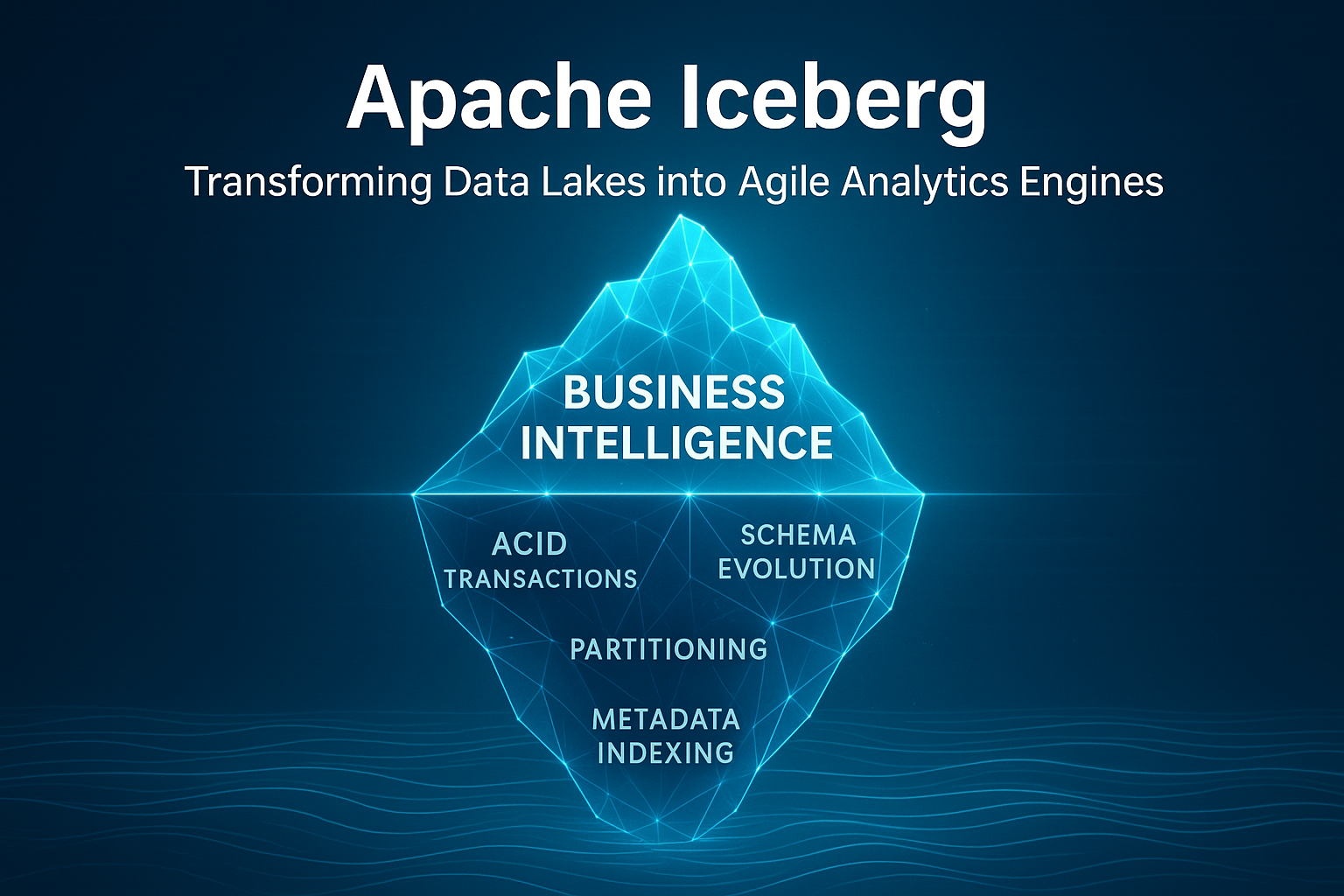Apache Iceberg: A Game Changer Table Format for Big Data Analytics

In today’s data-driven business landscape, organizations are continuously seeking ways to optimize their data architecture to support faster, more reliable analytics. Apache Iceberg has emerged as a game-changing table format for data lakes, addressing long-standing pain points and enabling businesses to extract maximum value from their data assets. This article explores how Iceberg is revolutionizing enterprise data management and why forward-thinking organizations are making the switch.
What is Apache Iceberg?
Apache Iceberg is an open-source table format designed specifically for massive analytic datasets. Developed initially at Netflix and now maintained by the Apache Software Foundation, Iceberg provides a high-performance, ACID-compliant solution for managing large-scale data lakes.
Unlike traditional data lake approaches that rely on simple file listings or basic partitioning schemes, Iceberg introduces a table-based abstraction layer with powerful metadata management capabilities. This fundamentally transforms how businesses interact with their data lakes, turning them from basic storage repositories into robust analytical platforms.
Key Business Benefits of Apache Iceberg
1. Enhanced Data Reliability and Consistency
For enterprises making critical decisions based on data lake analytics, consistency is non-negotiable. Iceberg delivers ACID transaction guarantees that prevent partial file updates and ensure data integrity across concurrent operations. This translates to dependable business intelligence and reduced risk of flawed decision-making based on incomplete data.
2. Optimized Performance for Business Analytics
Time-to-insight is a crucial competitive advantage in today’s fast-paced business environment. Iceberg accelerates analytics through partition evolution and hidden partitioning that optimize query performance. It employs metadata indexing that dramatically reduces the amount of data scanned during queries. Additionally, Iceberg supports schema evolution that enables business users to adapt to changing requirements without disrupting ongoing operations.
3. Reduced Total Cost of Ownership
Iceberg helps organizations control costs through efficient file compaction that minimizes storage requirements. It offers reduced processing overhead for query planning, which translates to faster insights with less computational expense. Organizations can reassign data engineering resources previously dedicated to managing consistency issues, allowing these teams to focus on higher-value activities. Because Iceberg’s cloud-native optimization minimizes data transfer and compute costs, it is particularly attractive for businesses operating in cloud environments.
4. Future-Proof Data Architecture
Adopting Iceberg means investing in a data architecture designed for flexibility. It provides seamless integration with popular query engines like Spark, Trino, Flink, and Presto, giving businesses freedom in their tool selection. Iceberg’s vendor-neutral approach prevents cloud provider lock-in, preserving strategic flexibility for businesses as cloud offerings evolve. Robust community support ensures continued innovation and enhancement, meaning businesses can rely on Iceberg as a long-term solution for their data architecture needs.
Real-World Business Applications
Organizations across industries are leveraging Iceberg to transform their data operations:
Financial Services: Banks and investment firms use Iceberg to maintain accurate, consistent data for risk analysis and regulatory compliance, where even minor inconsistencies can lead to significant financial or legal consequences.
E-commerce: Retailers implement Iceberg to unify customer, inventory, and transaction data across multiple channels, enabling real-time personalization and inventory optimization.
Healthcare: Medical institutions leverage Iceberg’s time travel capabilities to maintain patient records with perfect historical accuracy while supporting high-performance analytics for treatment optimization.
Implementation Considerations for Business Leaders
When evaluating Iceberg for your organization, consider these key factors:
Integration with Existing Tools should be carefully assessed for compatibility with your current analytics stack to determine if adaptations are needed. A well-planned Migration Strategy is essential to develop a phased approach to transition critical datasets to Iceberg with minimal business disruption. Team Readiness ensures your data engineering and analytics teams understand the new paradigm that Iceberg introduces and are prepared to leverage its capabilities. An updated Governance Framework allows organizations to capitalize on Iceberg’s enhanced metadata management and schema evolution capabilities.
The Road Ahead
Apache Iceberg represents more than just a technical improvement—it’s a strategic business asset that enables organizations to build more agile, reliable data platforms. As data volumes continue to grow and analytics demands become increasingly sophisticated, adopting modern table formats like Iceberg will be essential for maintaining competitive advantages.
Forward-thinking organizations are already using Iceberg to consolidate disparate data silos, accelerate analytics, and build more responsive data products. Those who embrace this technology now position themselves to extract maximum intelligence from their data assets while reducing operational complexity and costs.
For businesses serious about becoming truly data-driven, Apache Iceberg offers a compelling path forward. It transforms unwieldy data lakes into precise, high-performance analytic engines that drive measurable business results.
Dive Deeper with a Technical Implementation
Visit our Medium publication at Apache Iceberg in Action: A PySpark Example with Google Colab to access this technical resource. The article includes a step-by-step initial example, benchmark comparisons with traditional data lake approaches, and advanced configuration tips to maximize the value of your Iceberg implementation.


